Itinerary: Harnessing the water
Harnessing the water
The lake is no longer there, but both natural footprints and human ecological footprints are still very much in evidence. Witnesses to its history are everywhere: the drainage ditch, a major engineering project that made it possible to dry up the lake, and the canals that still fulfil their task of channelling surface water into the drainage ditch.
Scattered all over L’Estany, both in the surrounding hills and on the plain, there are many natural springs that provide the local population with a basic domestic and sanitary service. The Font Vella, or Font de les Eres, and Mig Prat are two of the most well-known.
The water also plays an important role as a generator of electricity. Although nowadays they tend to be poorly preserved or transformed, the area once boasted a large number of flourmills.
Download the track here
The amount of well-conserved features that still exist, however, allows us to creatively remodel the local cultural landscape, which was dominated by water and associated features. We recommend that you visit the following points of interest:
Les Nogueres channel
This channel forms part of the network of canals that serve to keep the lake dry. We know that it already existed in 1554 when the monastery ordered repairs to be carried out and improvements to be made to the lake’s drainage system.
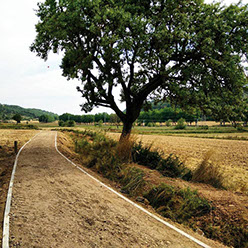
La Mina de l’Estany, the main drainage ditch
A large-scale civil project carried out between 1734 and 1737 that enabled the water of the lake to be definitively drained away which, therefore, dried up the lake. You can follow its course, look inside it and see the last section of it just at El Pontarró.
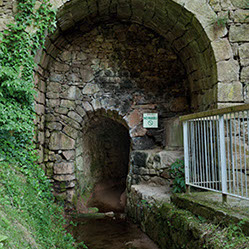
El Pedró del Pontarró
This is a seventeenth-century sculpture resting on a stone plinth inside a small chapel. Christ on the cross, the Virgin Mary, Mary Magdalene and the two thieves are sculpted there, with the city of Jerusalem in the background.
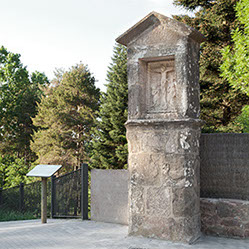
La Font Vella (or Font de les Eres) spring
A spring built in 1756 and originally called Font de les Eres but later renamed Font Vella. An engraved stone tells us about the person who ordered it to be built. Still used daily by locals, this spring is part of the identity of people from L’Estany.
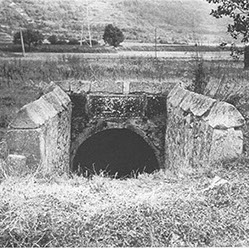
The area formerly occupied by the lake
Now that you know why the lake is no longer there, why not take a stroll over the 30,000 m2 of land that it once occupied to observe the special local flora and fauna. From here you will enjoy spectacular views of L’Estany.
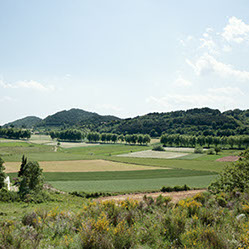
The village cross
Known locally as the Stone Cross, this gothic-style cross was sculpted in the fourteenth century. Take a close look at the engraving on the base, which depicts much of the symbology that forms part of local tradition.
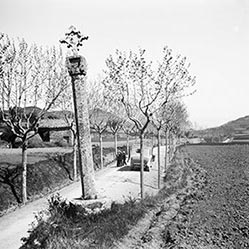
Elements patrimonals d'interés
